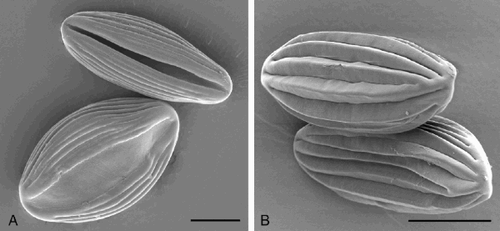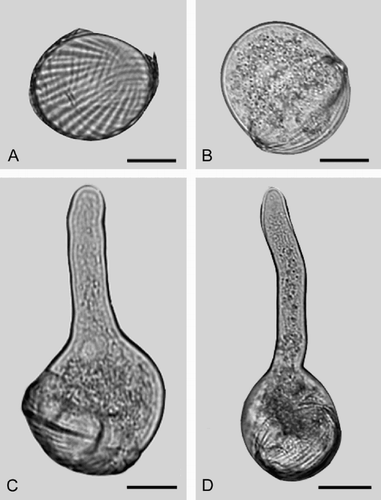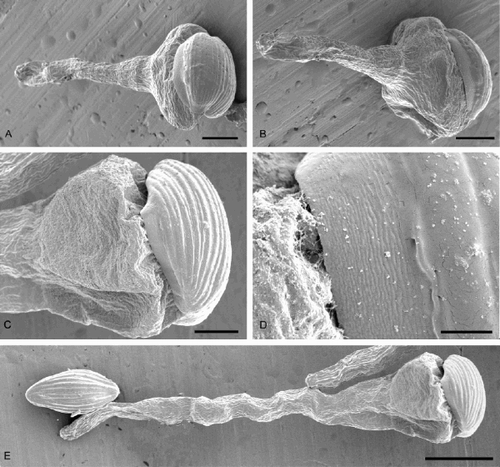Figures & data
Fig. 1. Phylogeny of the Gnetales. Relationships among seed plants have not yet been unambiguously resolved and phylogenetic relationships as well as interpretations of character evolution are uncertain. The clade Conifer II comprises Araucariaceae, Podocarpaceae, Sciadopitycaceae, Taxaceae, Cephalotaxaceae, Cupressaceae and Taxodiaceae.

Fig. 2. Polyplicate pollen grains of the Gnetales (SEM): (A) Welwitschia mirabilis Hook. f. Pollen grains of Welwitschia are monoaperturate with a distinct sulcus; (B) Ephedra altissima Desf. Ephedra grains are inaperturate. Scale bar – 15 μm.

Fig. 3. LM of germinating pollen grains of Welwitschia mirabilis Hook. f.: (A) Germination starts with a split in the sulcus area. (B) The gametophyte expands out of the exine, to a spherical form. (C–D) The pollen tube is initiated towards one of the polar ends. The exine remains as a “cap” on the gametophyte as the pollen tube continues to grow. Scale bars – 20 μm (A–C); 25 μm (D).

Fig. 4. SEM of germinating pollen grains of Welwitschia mirabilis Hook. f.: A, B. Male gametophyte partly covered by the exine. C, D. The finely striated sulcus area. E. The exine remains on the gametophyte as the pollen tube continues to grow. Scale bars – 15 μm (A, B); 10 μm (C); 2 μm (D); 30 μm (E).
